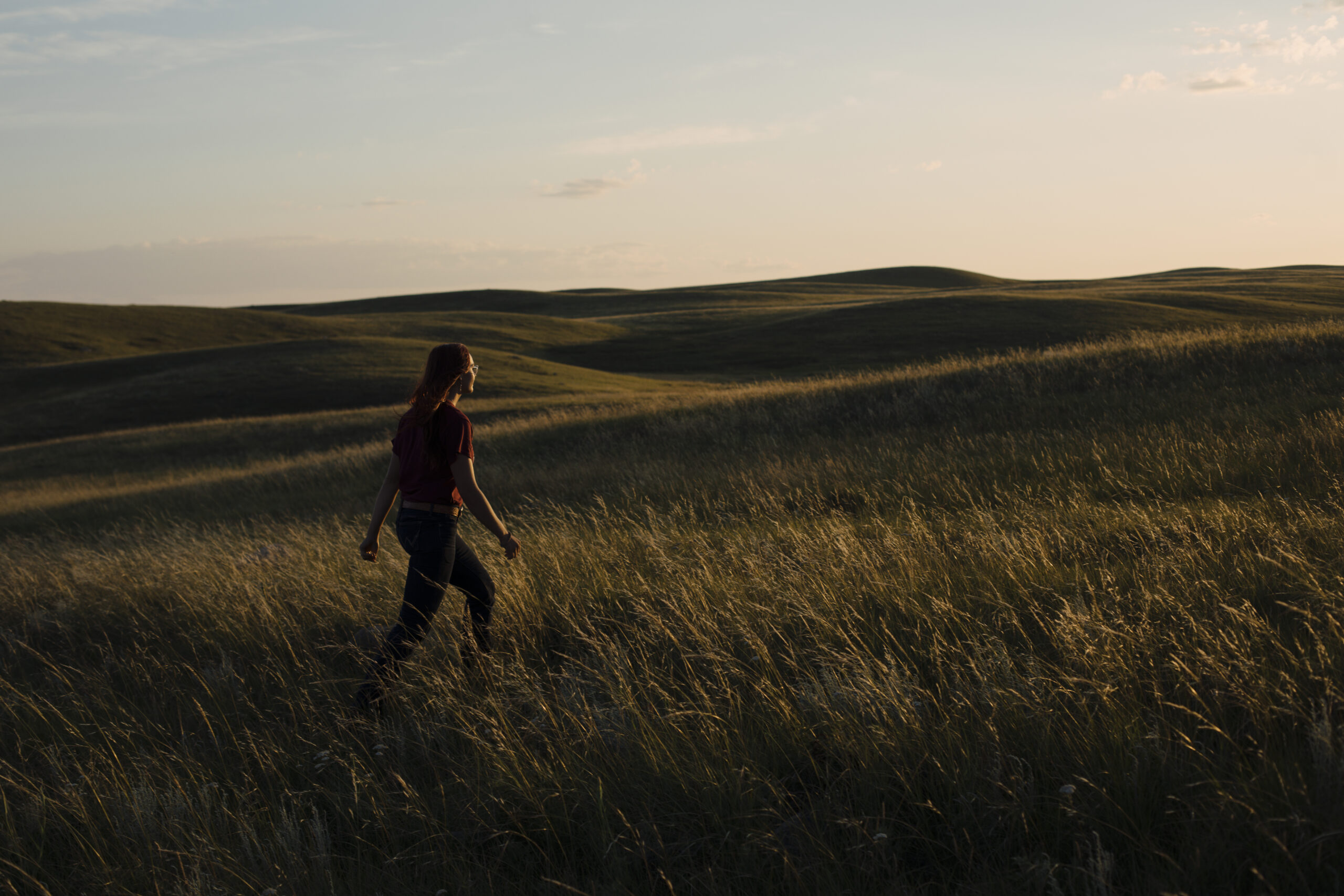
Two blank cheques: are Ontario and B.C. copying the homework?
Governments of the two provinces have eerily similar plans to give themselves new powers to...
Driving through the Canadian Prairies, it’s easy to look at the endless rolling landscape as a place of clean air and clean land — albeit dotted with oil and gas wells of varying integrity.
But that impression is only partially true.
Fertilizer use, diesel, gas and even cow poop mean carbon pollution from the agricultural sector accounts for approximately 10 per cent of Canada’s total emissions and, despite a dip in 2021, have been climbing.
Agriculture is the fifth largest contributor of emissions in the country, behind oil and gas, transportation, buildings and heavy industry.

According to data from the federal government’s national inventory report, compiled and analyzed by the National Farmers Union, agriculture contributed 82.6 megatonnes in 2021, the most recent year captured in the report. That’s up from 58.6 megatonnes in 1990. (One megatonne is one billion kilograms.)
Those emissions — and the policies put in place to reign them in — have a significant impact on farmers across the country.
Darrin Qualman, the director of climate crisis policy and action for the union, says the organization wanted to create an accessible and comprehensive report in order to inform policy and on-farm decisions. Qualman has held the climate crisis title since 2020, but says the union has been “raising questions about agricultural emission and climate since 1997.”
“Environment and Climate Change Canada is good at creating the data, but their national inventory report takes a bit of wading through,” he says.

The organization also went beyond the reporting required by international agreements and included all aspects of farm emissions to get a clearer picture of what’s happening — including fossil fuel production, farm equipment manufacturing and the production of fertilizers (not just their use).
“To answer the question, ‘What are the emissions from agriculture and associated input production?’ You have to include those things,” Qualman says.
Measuring carbon pollution from the countless pastures, feedlots and farms that dot the Canadian landscape is no small task and relies more on extrapolation than it does detailed examination.
Tim McAllister, who was not involved with the union report, is a principal research scientist with Agriculture Canada and says there have been a number of measurements taken on an experimental level, but to institute that same monitoring on farms would be overwhelming and cost prohibitive.
Instead, they base estimates off of models and experiments.
But that is starting to change.
McAllister says there are more measurements taking place on farms through an initiative called the living lab, and there’s plenty of work with producers to develop practices that can help with reduce pollution.
The farmers union report notes there are “significant uncertainties” in many of the measurements and work needs to be done to “reduce those uncertainties.”
“This is especially true as we endeavour to measure and report emissions reductions from on-farm changes — reductions that will initially be small though very important to quantify, document and reward,” it reads.
But the complexity doesn’t just revolve around measurement, it includes what’s measured in the first place.
The Intergovernmental Panel on Climate Change — whose reporting framework informs Canada’s data collection — doesn’t include inputs like fuel and fertilizer production, or the impact of manufacturing farm equipment when it measures agricultural emissions.

There are also the tricky equations of soil sequestration, which the National Farmers Union chose not to calculate as a sink for the overall emissions. In the vast majority of cases, that carbon won’t stay in the ground forever.
Even the sequestration that does happen from best practices — like not plowing fields before planting, known as zero-till, or sowing crops that don’t require yearly planting — has dropped and is highly variable from year to year, according to the union report.
Qualman says it’s important to sequester as much carbon in the soil as possible, but not to treat it as a zero-sum game.
“It’s important to interpret these numbers in ways that don’t lead you to make a policy error,” he says.
“And one of the policy errors that is possible, is saying that if we’re emitting a ton and sequestering a ton, they net out to zero and you don’t have to worry about that anymore.”
Despite the complexity, the report shows a marked increase in fossil fuel impacts from agriculture, as well as increased emissions from the use and production of fertilizers — the two areas Qualman argues need the most attention.
Raising cattle for meat or milk, the largest emitter in the sector with 28 megatonnes alone, has actually seen a drop in emissions due to a reduction in overall numbers of cattle and changes in the way farmers raise cows. These changes, McAllister says, include feeding cattle spent grain (a byproduct from the distilling industry) and recycling nutrients by using cow manure instead of fertilizer made with fossil fuels.
“Then there’s additional benefits of manure from the perspective of soil health and increasing organic matter content; you can increase carbon in the soil by applying manure as well,” he says.
Cattle herds can also contribute net-positives including grassland conservation and ecological health, when grazed on grassland pastures.

Despite some of the benefits from manure, the report shows nitrogen fertilizer, long used to increase crop yields, has doubled in Canada between 1990 and 2021. It is the second-largest agricultural emitter after cattle, accounting for 21.4 megatonnes in 2021.
But the measurement of those emissions is particularly uncertain and influenced by numerous factors: when the fertilizer is applied, where it’s placed, soil moisture, temperature and more. Those considerations form the basis of what’s known as the 4R approach — right source, right rate, right time, right place — which is popular among farmers.
Still, nitrogen fertilizer can produce nitrous oxide, a greenhouse gas 300 times more potent than carbon dioxide.
Fossil fuels used directly on the farm, as well as electricity consumed on farms, was the third largest contributor to emissions and is up to 15 megatonnes from around 8 megatonnes in the early 1990s.
Diesel use in particular has increased — more than doubling to 11 megatonnes between 1990 and 2021.
The lack of clear information on the agricultural sector can lead to trouble. In 2022, the federal government’s voluntary target to reduce emissions from fertilizers by 30 per cent produced an outcry from some corners, including provincial leaders, based largely on misinformation.
In Alberta, where the government regularly pushes back against federal climate policies, including the latest row over a net-zero electricity grid, the agriculture minister was given the task to push back “against policies passed by other jurisdictions that hinder the sector” in his recent mandate letter.
Ashley Stevenson, the press secretary for RJ Sigurdson, Alberta’s minister of agriculture and irrigation, said the mandate letter wasn’t referring to any specific policy but addedthe United Conservative Party government was “dedicated to advocating for our agricultural producers and advocating against policies that negatively impact them.”

Despite the federal government’s fertilizer emissions reduction efforts, Minister Sigurdson was also mandated to increase fertilizer production in Alberta.
“Our mandate to encourage increased nitrogen production does not conflict with these efforts to reduce emissions, nor did the federal government include fertilizer manufacturing emissions in their targets,” she said by email. “The target applies to emissions from fertilizer application.”
That’s at odds with the union report, which factors in production and consumption of the fertilizers.
Stevenson says Alberta prefers to focus on emissions intensity — the measure of carbon pollution relative to economic output — rather than overall emissions.
That sort of political debate is just one aspect of a complicated conversation around what needs to be done to reign in carbon pollution. Farm incomes, individual decisions, climate conditions over the course of years and what kinds of crops to plant are all factors that come into play across countless Canadian fields and pastures.
But that’s not all.
“The challenge is to meet the demand for food production and ensure food security, so how do we do that with the minimal amount of emissions possible?” McAllister says.
“Because of the urgency of taking action and the growing demand that we’re going to see for food as a result of the human population, we’re going to have to pull out all the stops in order to try to achieve that objective.”
Get the inside scoop on The Narwhal’s environment and climate reporting by signing up for our free newsletter. On a warm September evening nearly 15...
Continue reading
Governments of the two provinces have eerily similar plans to give themselves new powers to...

Katzie First Nation wants BC Hydro to let more water into the Fraser region's Alouette...

Premier David Eby says new legislation won’t degrade environmental protections or Indigenous Rights. Critics warn...
